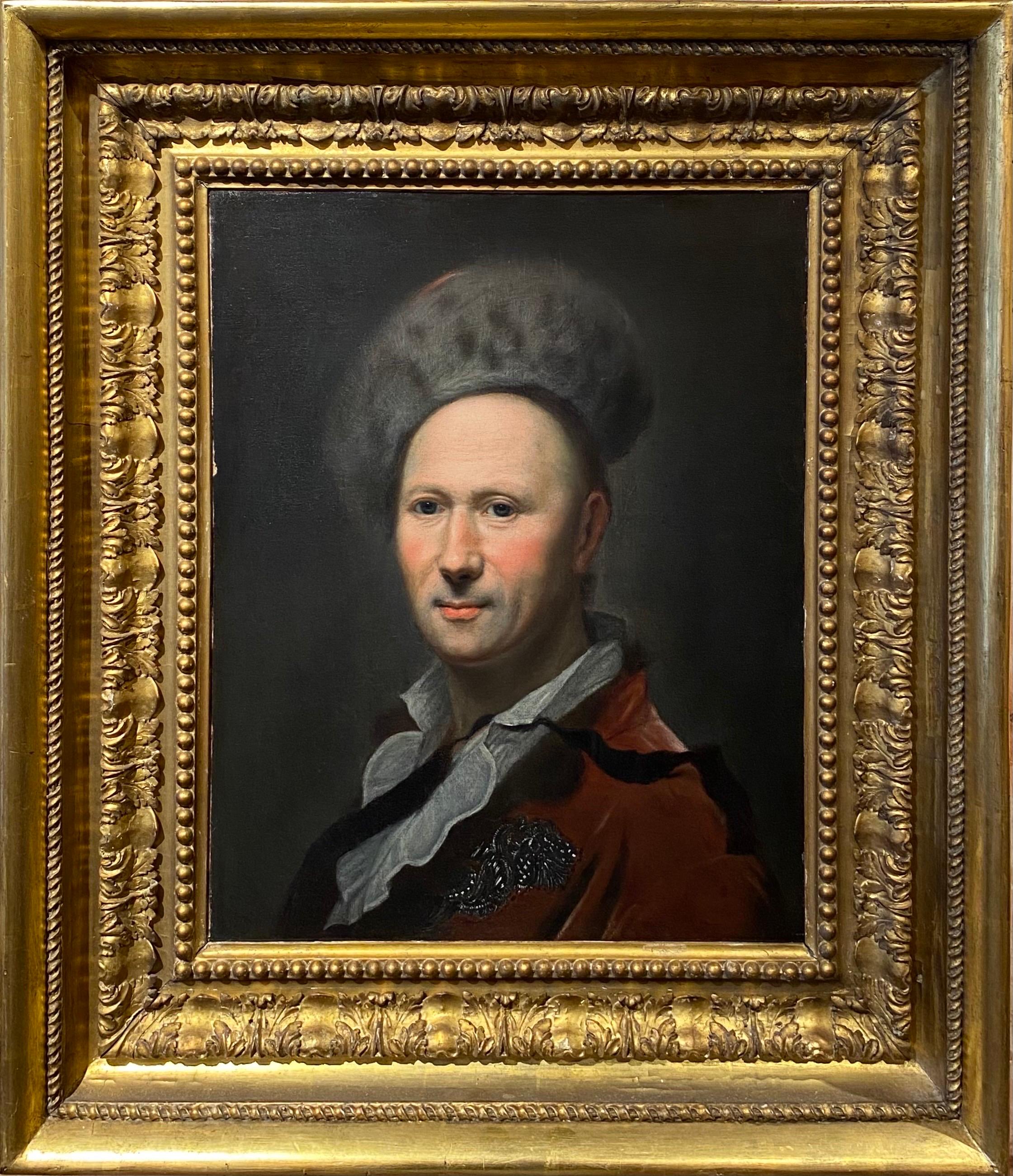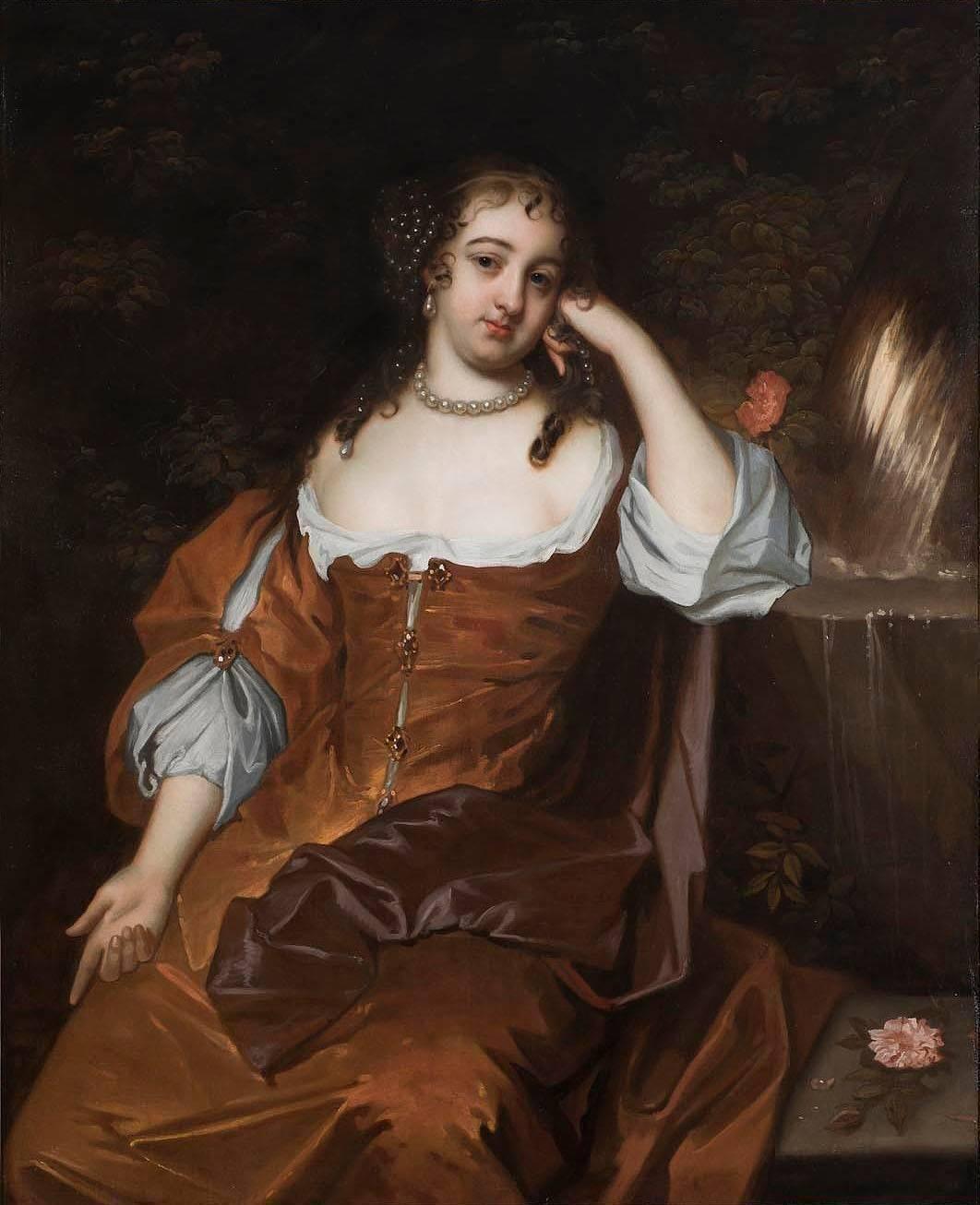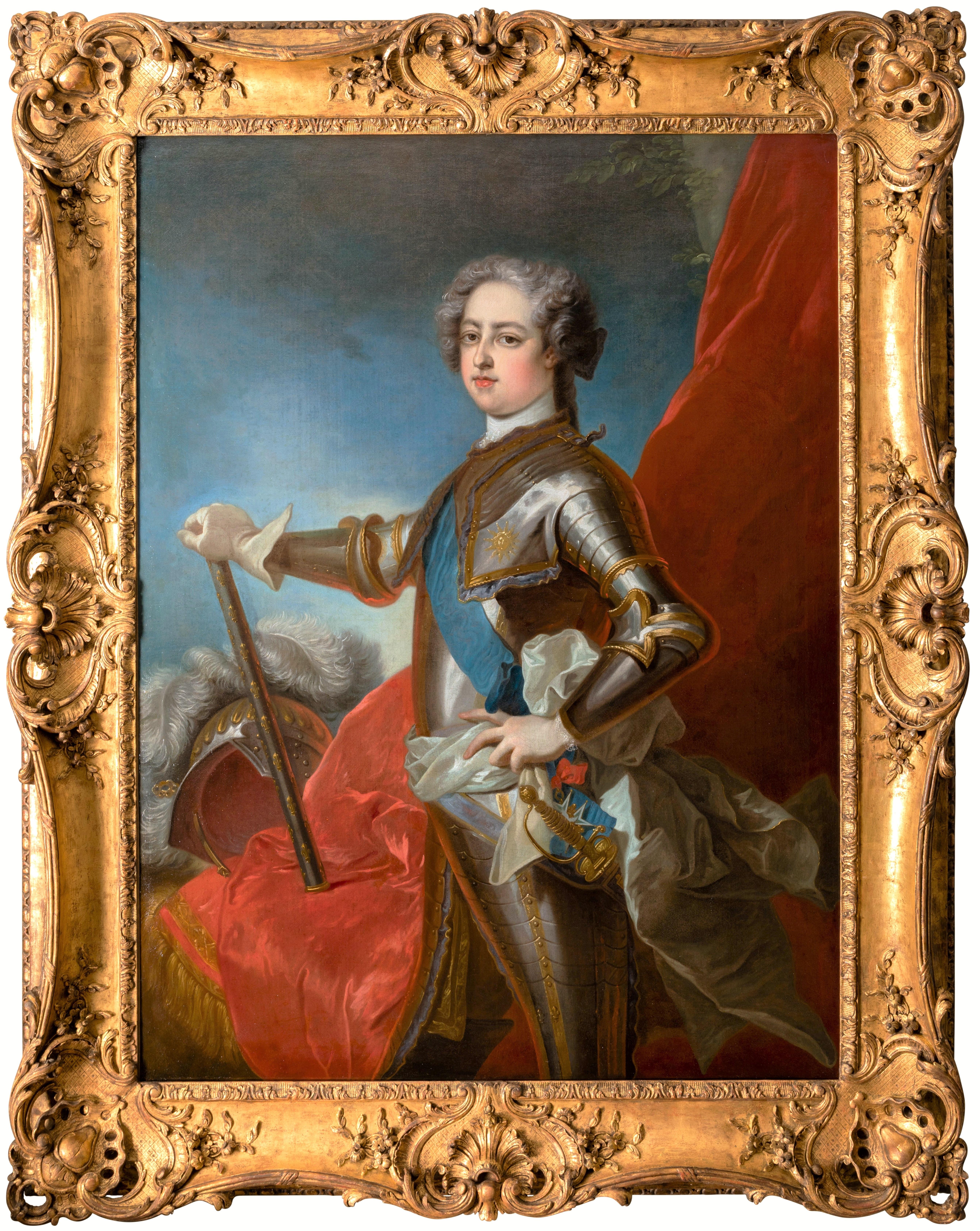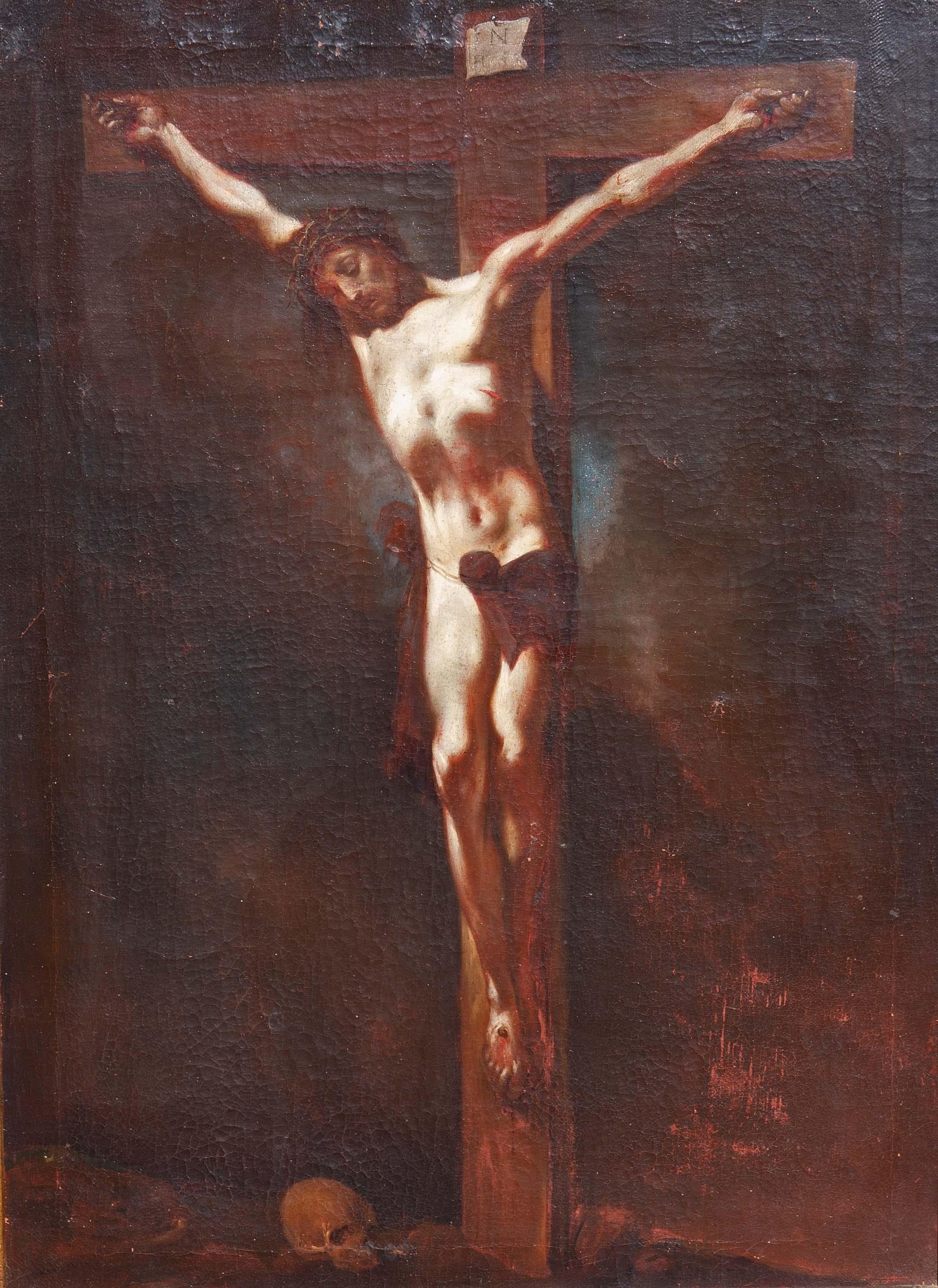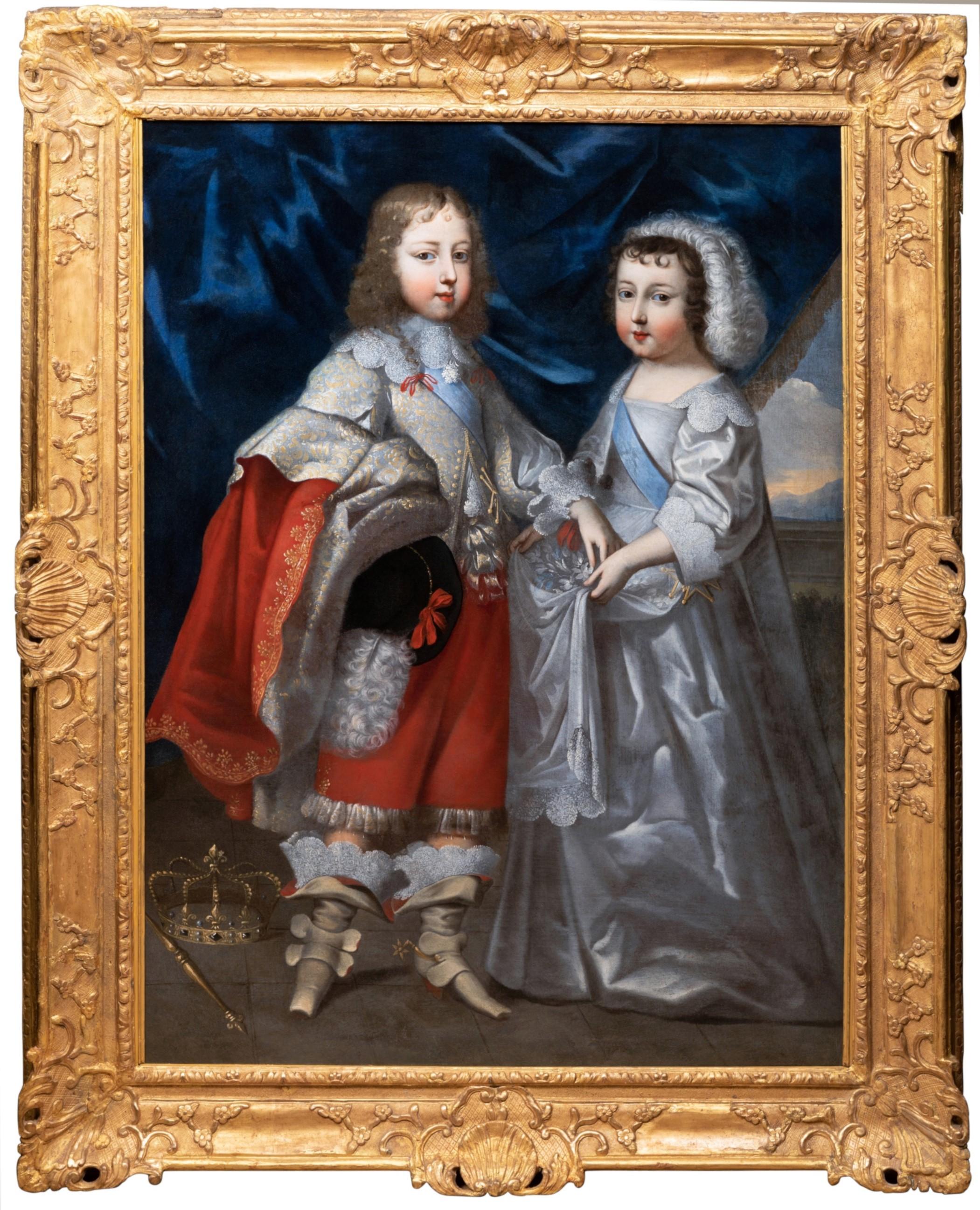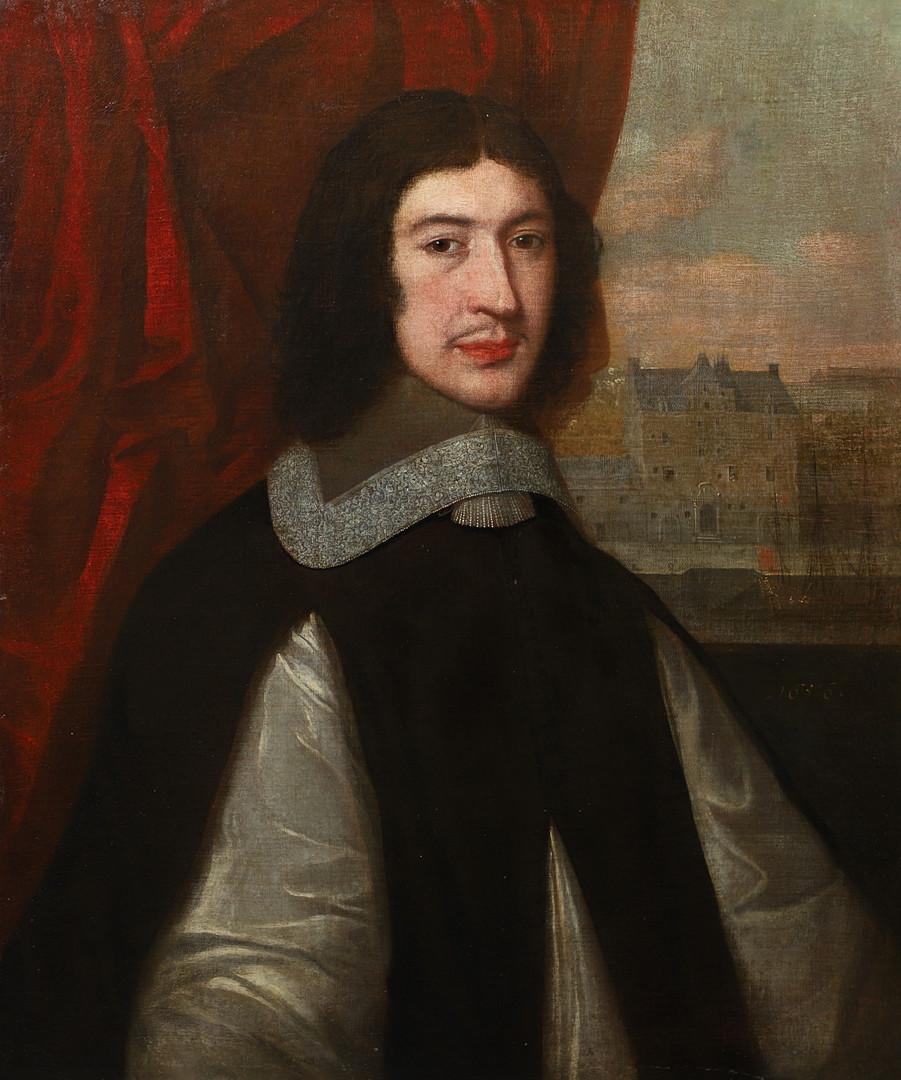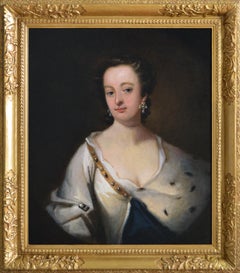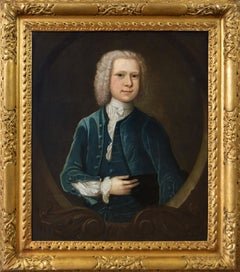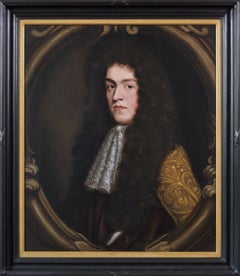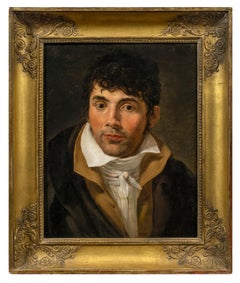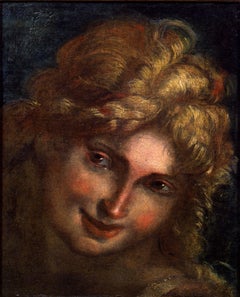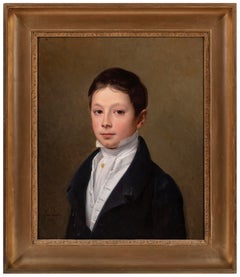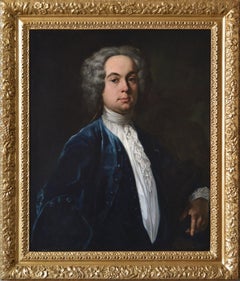
18th Century portrait oil painting of a gentleman
Want more images or videos?
Request additional images or videos from the seller
1 of 14
18th Century portrait oil painting of a gentlemanC1750
C1750
About the Item
- Creation Year:C1750
- Dimensions:Height: 37 in (93.98 cm)Width: 32 in (81.28 cm)Depth: 2.5 in (6.35 cm)
- Medium:
- Movement & Style:
- Circle Of:Allan Ramsay (1713 - 1784, Scottish)
- Period:
- Condition:
- Gallery Location:Moreton-In-Marsh, GB
- Reference Number:1stDibs: LU15628261082
About the Seller
4.9
Platinum Seller
These expertly vetted sellers are 1stDibs' most experienced sellers and are rated highest by our customers.
Established in 1972
1stDibs seller since 2015
270 sales on 1stDibs
Associations
The British Antique Dealers' AssociationLAPADA - The Association of Arts & Antiques DealersInternational Confederation of Art and Antique Dealers' Associations
More From This SellerView All
- 18th Century portrait oil painting of a lady in an ermine trimmed cloakBy Sir Godfrey KnellerLocated in Moreton-In-Marsh, GloucestershireCircle of Sir Godfrey Kneller Dutch, (1646-1723) Portrait of a Lady in an Ermine Trimmed Cloak Oil on canvas Image size: 26.5 inches x 22.5 inches Size including frame: 33.5 inches x 29.5 inches A well-executed half-length portrait of a lady painted in a feigned oval, circle of Sir Godfrey Kneller. The use of a feigned oval was a device used in portraiture to give a sense of depth and add an intimacy to the painting, drawing your attention to the sitter. The subject, posed without her wig in the undressed fashion of the day, wears a blue ermine trimmed blue cloak over a white silk robe...Category
18th Century Old Masters Portrait Paintings
MaterialsCanvas, Oil
- 18th Century portrait oil painting of a gentlemanLocated in Moreton-In-Marsh, GloucestershireFollower of Enoch Seeman the Younger German, (1694-1744) Portrait of Gilbert Sympkin Oil on canvas Image size: 29.25 inches x 24.5 inches Size including frame: 38 inches x 33.25 inches A fine three quarter length portrait of a gentleman traditionally identified as Gilbert Simpkin (Sympkin), follower of Enoch Seeman the younger, C1720. The portrait is set in a feigned sculptured oval cartouche, a device used to give a sense of depth. The sitter is depicted wearing a fashionable blue jacket and matching waistcoat with a white chemise and lace jabot. He wears a powdered wig in the fashionable style of the day and is posed holding his hat under his left arm with the fingers of his right hand stretched out. At court, long fingers signified wealth, culture and intelligence. The painting has clearly been executed by an artist of great ability who has been influenced by Enoch Seeman the younger. Gilbert Simpkin (Sympkin) was born in London on 24 August 1683, the son of John Simpkin and Susannah Butler. His grandfather was also called Gilbert Simpkin. He entered Oxford University in 1700 where he studied at St John’s College. In 1702, he became a student of Middle Temple, which at the time was one of the world’s most important centres of legal education. He later settled in Plymouth and then Bristol. He died in Bristol on 15 May, 1744 and was buried at Bristol Cathedral. He remained unmarried and the portrait may well have been commissioned to commemorate when he was first Called to the Bar or perhaps had established his own practice. Enoch Seeman or Seemann the younger was born in Danzig, Germany now Gdansk, Poland in 1694. His father was Enoch Seeman Senior, an artist of Flemish origin and his brothers Isaac, Noah and Abraham also became artists. He came to London with his father and brothers around 1704 and established himself as a portrait artist. From 1717 he became painter to the Royal court painting...Category
18th Century Old Masters Portrait Paintings
MaterialsCanvas, Oil
- 17th Century portrait oil painting of a gentlemanBy Willem WissingLocated in Moreton-In-Marsh, GloucestershireCircle of Willem Wissing Dutch, (1656-1687) Portrait of a Gentleman Oil on canvas Image size: 29 inches x 24.5 inches Size including frame: 35 inches x...Category
17th Century Old Masters Portrait Paintings
MaterialsCanvas, Oil
- 17th Century portrait oil painting of a gentlemanBy John RileyLocated in Moreton-In-Marsh, GloucestershireCircle of John Riley British, (1646-1691) Portrait of a Gentleman Oil on canvas Image size: 29 inches x 24 inches Size including frame: 36 inches x 31 inch...Category
17th Century Old Masters Portrait Paintings
MaterialsCanvas, Oil
- 17th Century portrait oil painting of a ladyBy Studio of Sir Peter LelyLocated in Moreton-In-Marsh, GloucestershireStudio of Sir Peter Lely Dutch, (1618-1680) Portrait of a Lady Oil on canvas Image size: 29.25 inches x 24.25 inches Size including frame: 37...Category
17th Century Old Masters Portrait Paintings
MaterialsCanvas, Oil
- 18th Century portrait oil painting of a boyBy Robert ByngLocated in Moreton-In-Marsh, GloucestershireCircle of Robert Byng British, (1666-1720) Portrait of a Boy Oil on canvas Image size: 28.5 inches x 23.5 inches Size including frame: 34.5 inches x 29.5 inches A fine half-length ...Category
18th Century Old Masters Portrait Paintings
MaterialsCanvas, Oil
You May Also Like
- Portrait of a GentlemanLocated in New York, NYCircle of Jacques-Louis David (French, 18th Century) Provenance: Private Collection, Buenos Aires Exhibited: “Art of Collecting,” Flint Institute of Art, Flint, Michigan, 23 November 2018 – 6 January 2019. This vibrant portrait of young man was traditionally considered a work by Jacques-Louis David, whose style it recalls, but to whom it cannot be convincingly attributed. Rather, it would appear to be by a painter in his immediate following—an artist likely working in France in the first decade of the nineteenth century. Several names have been proposed as the portrait’s author: François Gérard, Louis Hersent, Anne-Louis Girodet (Fig. 1), Theodore Gericault, and Jean-Baptiste Wicar, among others. Some have thought the artist Italian, and have proposed Andrea Appiani, Gaspare Landi...Category
18th Century Old Masters Paintings
MaterialsCanvas, Oil
$45,000 - Head of an AngelLocated in New York, NYProcaccini was born in Bologna, but his family moved to Milan when the artist was eleven years old. His artistic education was evidently familial— from his father Ercole and his elder brothers Camillo and Carlo Antonio, all painters—but his career began as a sculptor, and at an early age: his first known commission, a sculpted saint for the Duomo of Milan, came when he was only seventeen years old. Procaccini’s earliest documented painting, the Pietà for the Church of Santa Maria presso San Celso in Milan, was completed by 1604. By this time the artist had made the trip to Parma recorded by his biographers, where he studied Correggio, Mazzola Bedoli, and especially Parmigianino; reflections of their work are apparent throughout Procaccini's career. As Dr. Hugh Brigstocke has recently indicated, the present oil sketch is preparatory for the figure of the angel seen between the heads of the Virgin and St. Charles Borrommeo in Procaccini's altarpiece in the Church of Santa Afra in Brescia (ill. in Il Seicento Lombardo; Catalogo dei dipinti e delle sculture, exh. cat. Milan 1973, no. 98, pl. 113). As such it is the only known oil sketch of Procaccini's that can be directly connected with an extant altarpiece. The finished canvas, The Virgin and Child with Saints Charles Borrommeo and Latino with Angels, remains in the church for which it was painted; it is one of the most significant works of Procaccini's maturity and is generally dated after the artist's trip to Genoa in 1618. The Head of an Angel is an immediate study, no doubt taken from life, but one stylistically suffused with strong echoes of Correggio and Leonardo. Luigi Lanzi, writing of the completed altarpiece in 1796, specifically commented on Procaccini's indebtedness to Correggio (as well as the expressions of the angels) here: “Di Giulio Cesare...Category
17th Century Old Masters Figurative Paintings
MaterialsCanvas, Paper, Oil
- Portrait of a Young BoyLocated in New York, NYSigned and dated, lower left: Louise Hersent/ 1823 Provenance: Private Collection, Chicago, by 1996 Private Collection, Florida This charming portrait of a young boy is the work of Louise-Marie-Jeanne Hersent, a little-known woman artist of the French Restoration often identified by her maiden name, Mauduit. While Hersent—as we will call her here following the signature on the painting—has been understudied, the known details of her life and career reveal that she held a privileged position in artistic life in the early nineteenth century in Paris. She exhibited at the Salon from 1810 until 1824, and in 1821 she married the painter Louis Hersent, a successful pupil of Jacques-Louis David who was patronized by Louis XVIII and Charles X. It is likely through her husband’s royal patronage that Hersent’s Louis XIV Visits Peter the Great was purchased for the Royal Collection in Versailles. In 1806, while still Louise Mauduit, she painted a portrait of Napoleon’s youngest sister, Pauline Bonaparte...Category
1820s Old Masters Paintings
MaterialsCanvas, Oil
- Portrait of Conrad Friedrich Hurlebusch, Early 18th Century Oil PaintingBy Dominicus van der SmissenLocated in London, GBDominicus van der Smissen Early 18th Century Portrait of Conrad Friedrich Hurlebusch Oil on canvas Image size: 20½ x 16¼ inches Period gilt frame This is a portrait of Conrad Friedrich Hurlebusch, composer, Kapellmeister and organist, whom Van der Smissen most probably portrayed during his stay in Hamburg, Brunswick or Amsterdam. The identification is based on the reproduction of the portrait which was engraved by Pieter Anthony Wakkerdak (1740- 1774). Van der Smissen has reduced the face of the sitters to an egg-shaped oval in three-quarter view, applying diminution to one half of the figure’s torso, which is farther away from the viewer. This partial side view, with the head turned to look at the viewer over the shoulder, creates spatial depth and brings the figure to life by avoiding the stiffness of a frontal depiction. Because the artist chose to highlight the figure from above, a distinct shadow is cast under the tip of the nose, in the shape of a triangle. This is an often recurring and almost ‘signature’-like feature in Van der Smissen’s oeuvre. Hurlebusch's garments are of a very high quality and serve to reflect the sitter’s wealth, status and elegance. During this period, gentlemen often shaved their heads in order to facilitate the wearing of a wig, which wouldbe worn with a suit. Here Hurlebusch has been depicted in a luxurious turban-like cap lined with lynx fur, a highly fashionable and expensive material at the time. Over his shirt, he wears a velvet fur-lined gown adorned with decorative clasps fashioned from silver braid. The elegant informality of his appearance can be seen in his unbuttoned shirt and the unfastened black ribbon hanging from his button hole, which has been artfully arranged into a fluttering drape by the portraitist. The Sitter Hurlebusch was born in Brunswick, Germany. He received the first instructions in his field from his father Heinrich Lorenz Hurlebusch, who was also a musician. As an organ virtuoso, he toured Europe, visiting Vienna, Munich and Italy. From 1723 to 1725 he was Kapellmeister in Stockholm; later he became Kapellmeister in Bayreuth and Brunswick, and lived in Hamburg from 1727 to 1742, where he had contact with fellow composers Johann Mattheson and Georg Philipp Telemann. He made his living composing, performing and teaching. In 1735 and 1736, he is believed to have visited Johann Sebastian Bach in Leipzig, who promoted Hurlebusch’s compositions as the local seller...Category
Early 18th Century Old Masters Portrait Paintings
MaterialsOil, Canvas
- Portrait of a Lady, 17th Century Flemish Oil Old MastersBy Jacob HuysmansLocated in London, GBJacob Huysmans Flemish 1633 - 1696 Portrait of a Lady Oil on canvas Image size: 49 x 40 ¼ inches Gilt frame Huysmans was born in Antwerp and came to England during the reign of Charles II where he became one of the fashionable painters of the court.. The diarist Samual Pepys noted the artist as capable of a more exact likeness than Lely. Certainly the diarist records that by August 1664 in the circle of Queen Catherine...Category
17th Century Old Masters Portrait Paintings
MaterialsCanvas, Oil, Acrylic
- 18th c. French Portrait of Princess of Bourbon as Hebe, Pierre Gobert, c. 1730By Pierre GobertLocated in PARIS, FRPortrait of Princess of Bourbon as Hebe Pierre Gobert, circa 1730 Presumed portrait of Elisabeth Thérèse Alexandrine of Bourbon-Condé, Mademoiselle de Sens, depicted as the goddess Hebe kidnapped by Zeus, transformed into an eagle. 18th century French School, around 1730 Pierre Gobert (1662-1744) and workshop Oil on canvas Dimensions: canvas: h. 129 cm, w. 95cm Dimensions: framed: h. 156 cm, w. 124cm Louis XIV style giltwood and cardved wood frame Large and imposing portrait of the young princess portrayed seated on an eagle in the heavens. Seen from the front, the princess is dressed in a low-cut white chiffon dress, exposing her throat. Delicately made-up oval face, dominated by large blue-gray eyes is surrounded by powdered hair, raised, releasing the forehead and the ears, and of which some locks fall on his shoulder. A large blue scarf passed over the shoulder covers her knees and flies in the wind. A garland of flowers coming from the back goes over the knees and down again on the eagle. In her right hand she holds a golden goblet and in her left hand an ewer. The eagle supporting the young woman seizes in its claws the thunderbolt (the beam of fiery lightning), the attribute of Zeus. The figure of the young woman is enlivened by the fluidity of the antique drapes...Category
Early 18th Century Old Masters Portrait Paintings
MaterialsCanvas, Oil
$23,491 Sale Price20% Off
Recently Viewed
View AllMore Ways To Browse
English Pastel Portraits
James I 17th Century
Middle Eastern Portrait
T Stewart
Antique Black Velvet Paintings
Woman Reading Portrait Oil Painting
Holy Roman
Oil Portrait English 19
Studio 54 Invitation
El Henry
Red Dior Hat
1950s Sydney
Mother Of Pearl Portrait
Dali Travel
Vintage Green Lady Painting
17th Century Portrait Of A Gentleman
Victorian Women Portrait
Richmond Oil Portrait



